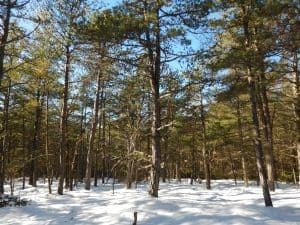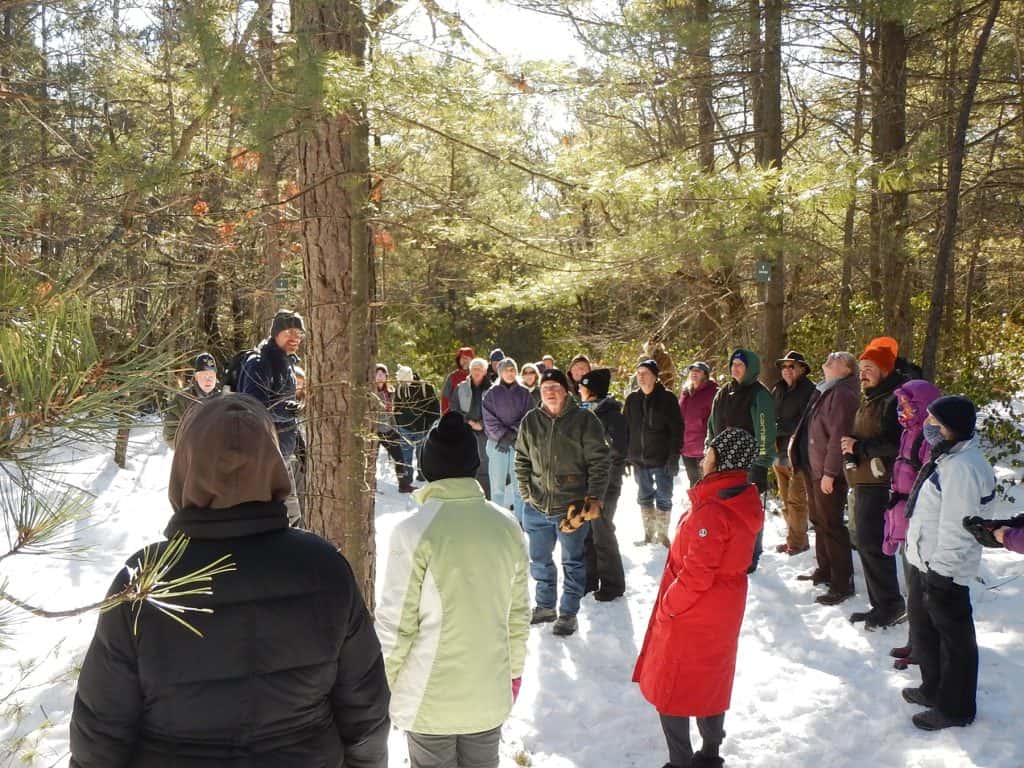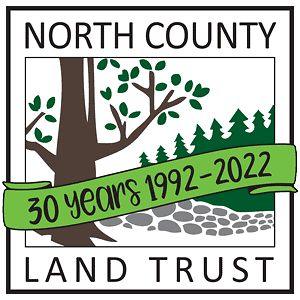
Last fall, North County Land Trust was notified that Mass Audubon was planning to conduct forest cutting activities at the Flat Rock Wildlife Sanctuary in Fitchburg in early 2022 to support the persistence of the sanctuary’s distinctive ridgetop pitch pine heathland (learn more about Pitch Pine Natural Community). Because the cutting activity would be adjacent to our Crocker Conservation Area and would require the use of our shared Flat Rock trail, we were anxious to coordinate on outreach to the community.
“For people who frequent and love a conservation area, it can be shocking when forest management activities dramatically change the look and feel of the forest they have come to “know and love. It’s important that we are transparent with the process of making such decisions on this land we are responsible to protect and care for in perpetuity, ” Anna Wilkins, Executive Director explains.
Mass Audubon’s Senior Conservation Ecologist, Tom Lautzenheiser, was more than willing to co-sponsor and informational walk with NCLT which took place on January 22, 2022. NCLT and the Worcester County Conservation District were also in communication about co-sponsoring forestry-themed walks this season and were happy to join the collaboration to get the word out.
As Mass Audubon’s press release explains, “The project will remove red maple, white pine, and other competing tree species from 20 acres of the approximately 40-acre heathland community while retaining oaks and pitch pine, resulting in an open woodland structure. Logging debris will be chipped and removed from the site to decrease fuel loads for wildfire.
Active forest management on a Mass Audubon wildlife sanctuary may come as a surprise to many, as we manage most of our forested acres more passively, such as for carbon sequestration and other benefits of mature/maturing forest. However, in this case, forest succession threatens to degrade an unusual and vulnerable ridgetop heathland community, and an active approach can improve the habitat’s ability to support populations of uncommon birds, butterflies, and other wildlife.
Climate change is an important consideration for this project. The site, a ridgetop with shallow soils, is susceptible to drought, and climate projections indicate that droughts will become both more frequent and intense in the coming decades. Dry conditions increase the site’s vulnerability to fire. Reducing fuel loads on the site will enable periodic, controlled, low-intensity burns in the future to prevent a major fire episode that could endanger the surrounding mature forest or nearby neighborhoods.
Work is anticipated to take approximately three weeks, and will involve temporary disruption of access along the sanctuary’s Flat Rock Road Path and other nearby trails along the Flat Rock ridgeline.
The project is being planned in coordination with a Massachusetts-licensed consulting forester, following Best Management Practices as mandated by the Massachusetts Forest Cutting Practices Act. The project is funded in part through the MassWildlife Habitat Management Grant Program, and project planning has benefitted from guidance provided by MassWildlife staff and other experts.”

If you have any questions about the proposed heathland management project, contact Senior Conservation Ecologist Tom Lautzenheiser at tlautzenheiser@massaudubon.org.
